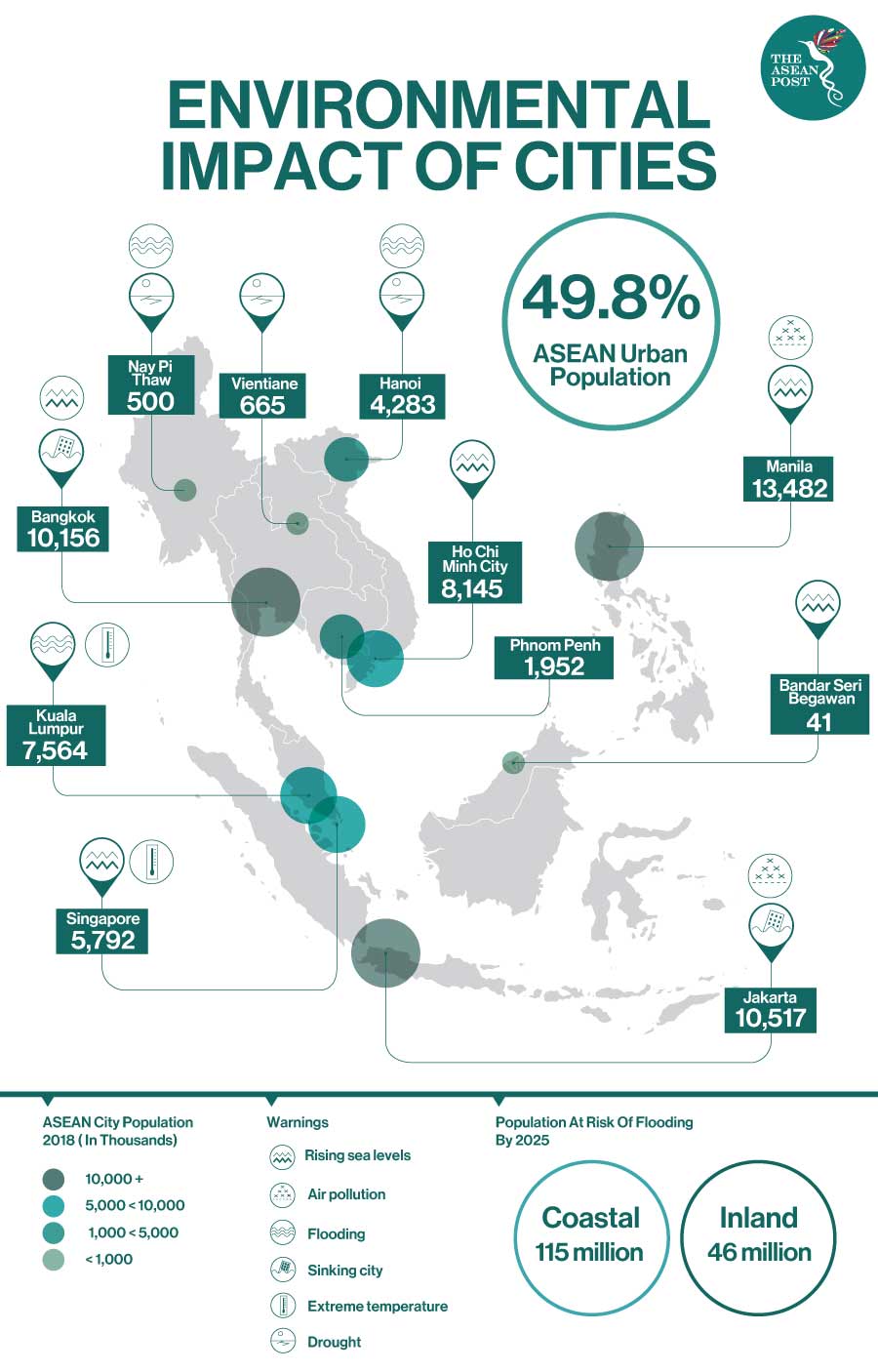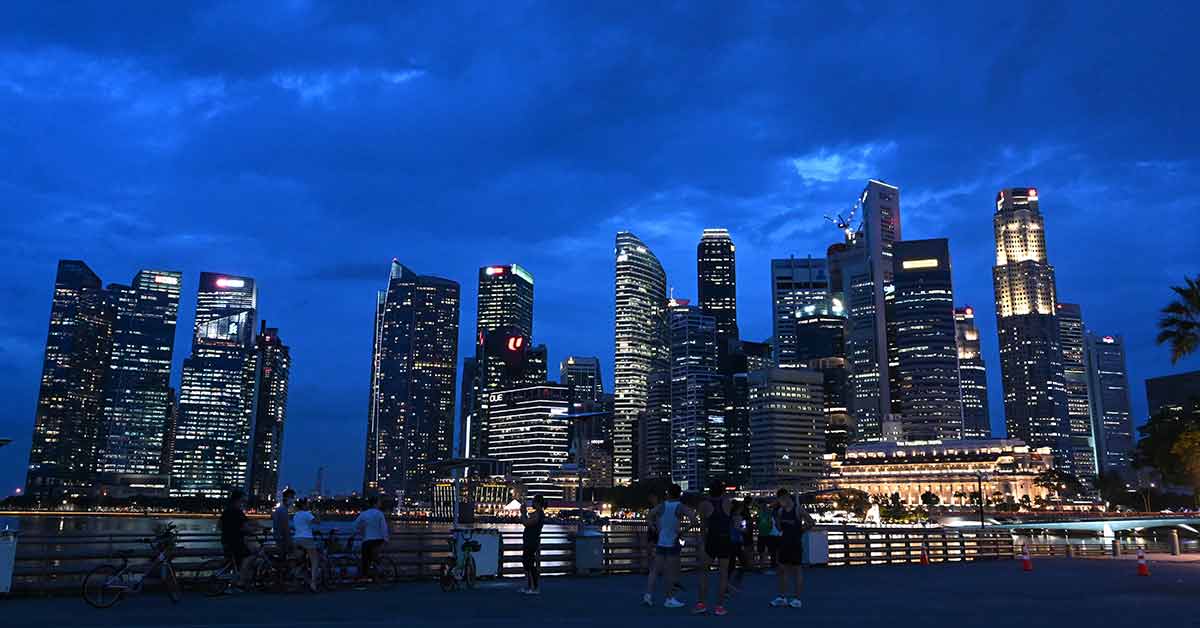As megacities emerge across the globe, the ones in Asia remain among the fastest growing and cheapest places to build. These cities will continue to grow in size and affluence, due to ever-increasing urban populations.
The United Nations (UN) describes megacities as urban areas with a population of 10 million or more. If urban populations continue to swell at their current rate, the number of megacities in the world could increase to 43 by 2030. By 2050, 75 percent of all humanity will be living in cities.
The International Construction Costs 2019 report by global design, engineering and management consulting company, Arcadis shows that cities in Southeast Asia, such as Kuala Lumpur, Jakarta and Bangkok are among the world’s cheapest cities for new construction. Factors contributing to this are reduced costs including lower wages, accessibility to construction materials and availability of land at lower costs.
The growth of ASEAN’s megacities parallels the growth of its populations, creating a concentration of economic activities and increased connectivity, leading to more development and therefore more people.
Across ASEAN, there is a population of over 640 million people. The region is one of the largest economies in the world, and it is believed that by 2050, it will be the fourth largest economy in the world. In addition, in the next 30 years, seven countries in the bloc will also have more than 50 percent of their populations residing in major urban areas.
However, ASEAN populations are very disparate, ranging from highly urbanised Singapore and Malaysia to semi-urbanised Thailand, Indonesia, Philippines and Vietnam. Cambodia remains predominantly rural.
As megacities are poised to contribute to more than half the rise in global greenhouse gas (GHG) emissions and atmospheric pollutants, the idea of a futuristic world looks to be one more likely seen in dystopian fiction.
Struggling Megacities
Glenn J Lutz, CEO of Arcadis Asia commented that Singapore “has been relatively quick to adopt new technologies that will allow greater efficiencies and sustainability in the built environment." Nevertheless, other ASEAN cities are struggling to follow suit.
Located mainly near coastal areas, Southeast Asia’s megacities are feeling the effects of climate change. Jakarta and Bangkok are literally sinking under the weight of their populations, while other ASEAN cities are at high risk of exposure to at least one type of natural disaster. Megacities like Jakarta and Manila face high risk of exposure to three or more types of disasters.
Currently, Jakarta is the most populous ASEAN city with an estimated 34.5 million inhabitants, followed by Manila, Bangkok, Ho Chi Minh City and Kuala Lumpur.

Growing economies demand for increased development, but as the region progresses, large developing ASEAN megacities face pragmatic challenges to provide infrastructure while managing efficient and sustainable distribution of resources to their growing number of citizens.
Population increase simultaneously raises consumption of resources, raw materials, food and energy. This increase will in turn affect the natural habitats of forests and wetlands, leading to a decline in numerous species critical to providing food and pollination while damaging the earth’s capacity to renew oxygen, soil and clean water. All of which are essential to our survival.
Adding Coal To Fire
Back in May, the concentration of carbon dioxide in the atmosphere was the highest in the history of humanity, at around 418 parts per million (PPM). The record was broken in the midst of the coronavirus pandemic, even though the crisis has driven one of the largest drops in carbon dioxide (CO2) emissions ever recorded.
Richard Betts, a scientist at the United Kingdom’s (UK) Met Office said that even such big drops in CO2 emissions will have little impact on overall CO2 concentration in the atmosphere – which is what matters most for climate change.
Activities such as burning fossil fuels and continuous de-forestation to sustain our megacities are some of the main causes of increasing global temperatures. Yet, this prediction is not new, and advice to mitigate the effects, dates back decades.
As global carbon readings continue to rise, emerging economies in ASEAN are the most vulnerable to climate change. According to think tank Centre for Strategic and International Studies (CSIS), “the 50-70 centimetre rise in sea levels expected by the end of the century will increasingly threaten the 77 percent of Southeast Asians who live along the coast or in low lying river deltas.” By 2050, daily high tides will flood the areas where over 48 million people in the region now live, while predicted average annual flood levels would inundate the homes of over 79 million.
Climate proofing our megacities is crucial, but it is also imperative to work towards minimising the impact of climate change. Unless governments shift their focus from growth and building to fostering quality living environments, the impending climate catastrophes cannot be averted.
Related Articles:
